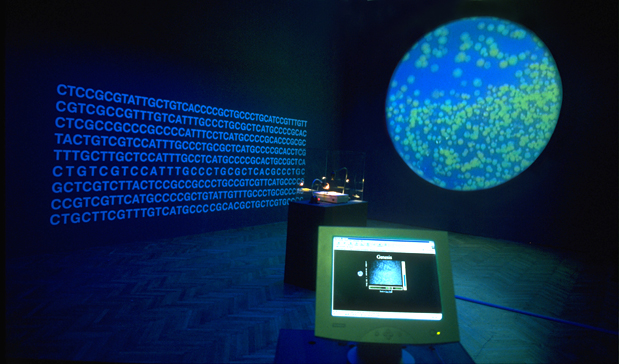E.K.: Sure, the artwork instantiates a new reality. But the true model is not Edunia itself. Edunia is an embodiment. Edunia in a sense is synecdochically an instantiation of the model that it embodies. The true model here is one that speaks of the permeability or the network among all members of the community of life. And when I talk about ontology I think of the living, exclusively. So I would not say an ontological model, because I apply the word «ontology» to the living creature that is there, in front of you. Perhaps ontological aesthetics. Yes, because what defines Edunia is not the shape, not necessarily its color, although the red veins are important in this particular case. But it is not a botanical project. What defines her is the fact that she is a plantimal, a category of being which is not a plant and not an animal. So, an ontological aesthetics, yes, because as an artist I make artworks and these artworks are alive. So to me that makes sense. Ontological model runs the risk of going back to a level of abstraction that is exactly what I do not want to do. I want to emphasize the irreducible materiality of the artwork itself.
T.H.: I would like to ask you a question concerning another of your works, the interactive transgenic work Genesis. I think what is fascinating about it are the different experiences and processes of translation and transference. First there is the scripture, «the word» and a foundational text from our western tradition, then we have a code, and at the end an image, an experience, the artwork itself.
